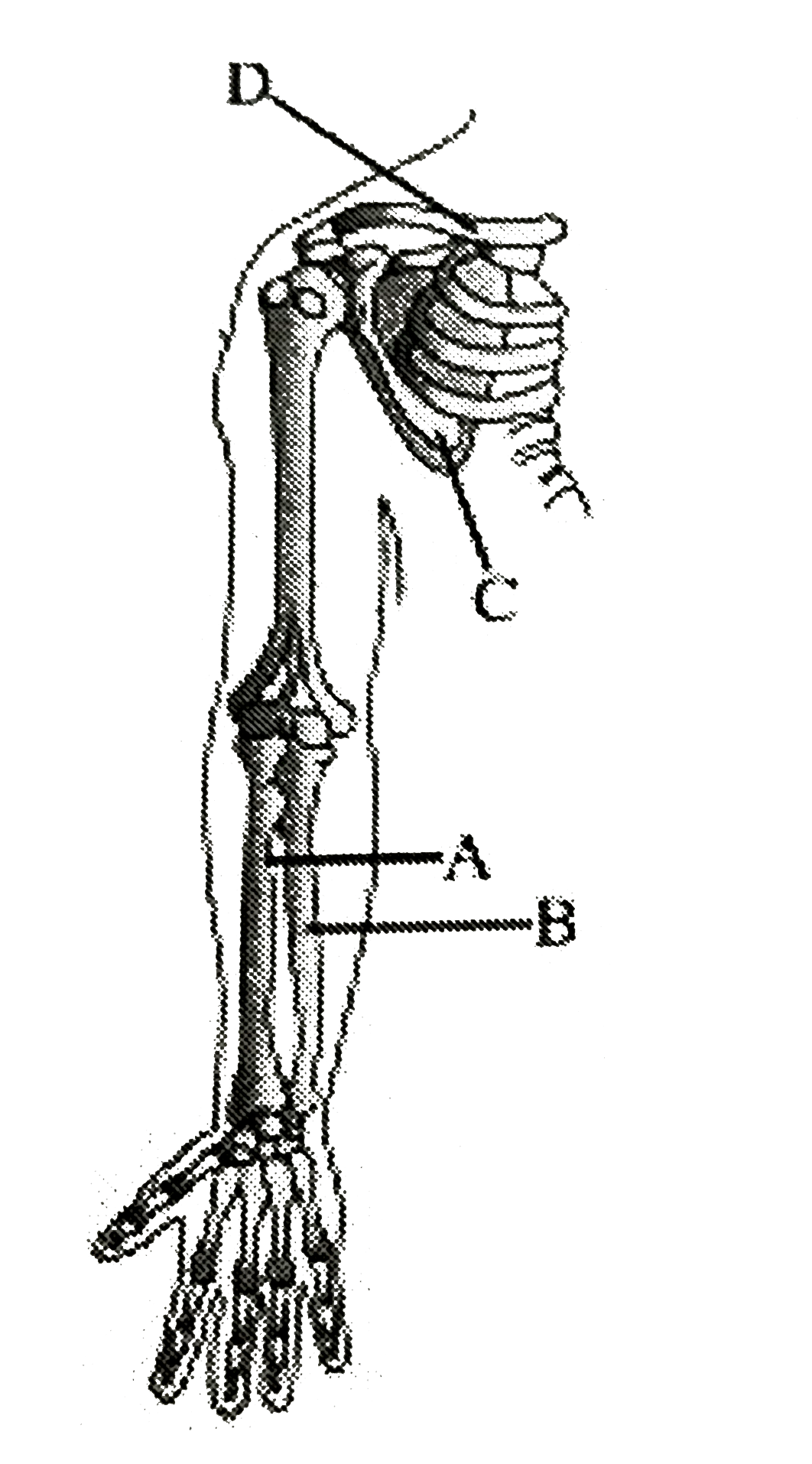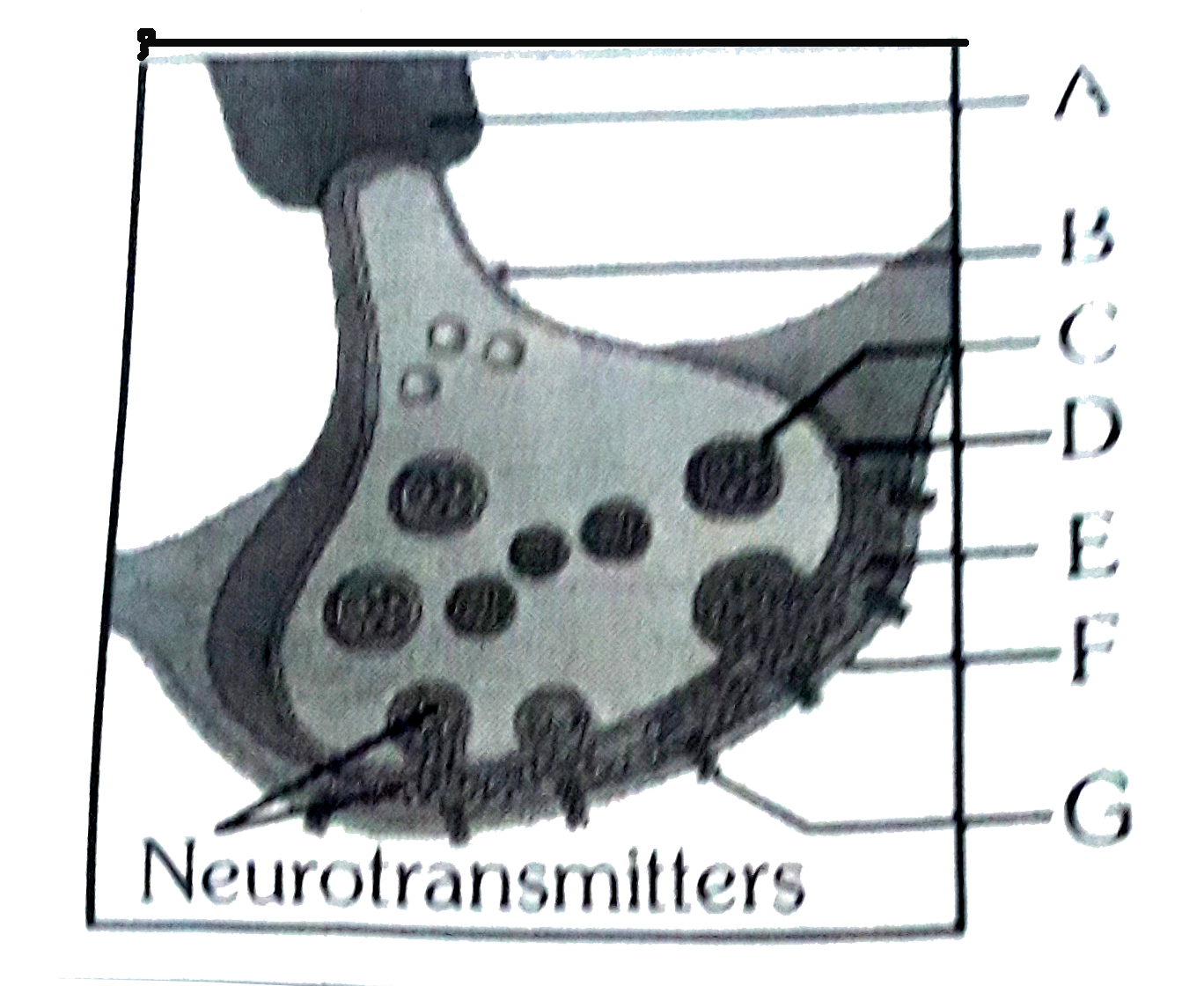In the following diagram showing axon terminal and synapse, A, B, C, D and E respectively represents
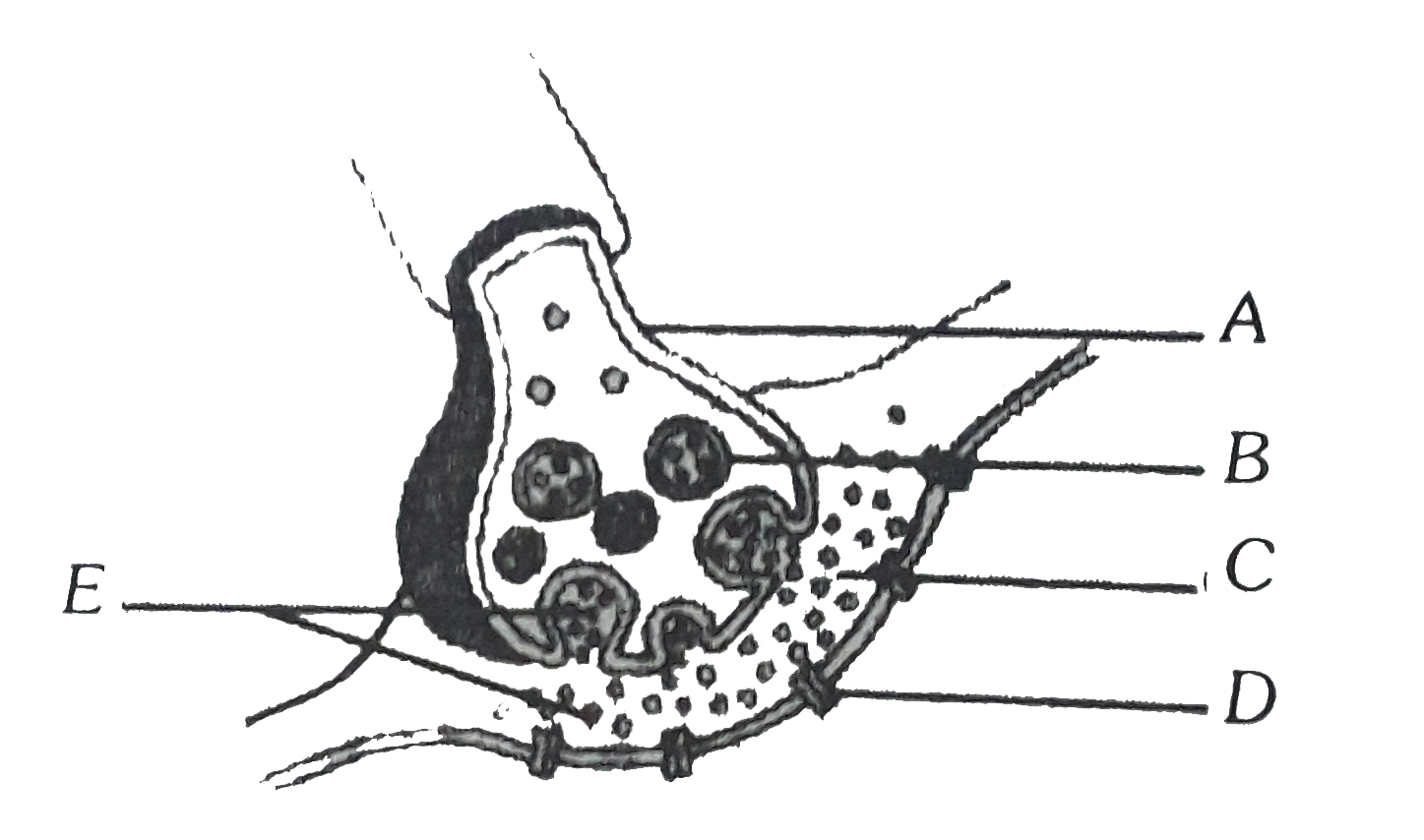
Axon terminal, synaptic cleft, synaptic vesicles, neurotransmitters and receptors
Axon terminal, synaptic vesicles, synaptic cleft, receptors and neurotransmitters
Synaptic cleft, synaptic vesicles, axon terminal, neurotransmitters and receptors
Synaptic vesicles, axon terminal, synaptic cleft, receptors and neurotransmitters
The correct Answer is:b
Step by step video, text & image solution for In the following diagram showing axon terminal and synapse, A, B, C, D and E respectively represents by Biology experts to help you in doubts & scoring excellent marks in Class 11 exams.
Updated on:21/07/2023Topper's Solved these Questions
- NEURAL CONTROL AND COORDINATIONBOOK - ERRORLESS CHAPTER - NEURAL CONTROL AND COORDINATIONEXERCISE - Different types of Receptors
15 Videos
- NEURAL CONTROL AND COORDINATIONBOOK - ERRORLESS CHAPTER - NEURAL CONTROL AND COORDINATIONEXERCISE - Eye
59 Videos
- NEURAL CONTROL AND COORDINATIONBOOK - ERRORLESS CHAPTER - NEURAL CONTROL AND COORDINATIONEXERCISE - Part of nervous system
127 Videos
- MORPHOLOGY OF FLOWERING PLANTSBOOK - ERRORLESS CHAPTER - MORPHOLOGY OF FLOWERING PLANTSEXERCISE - Morphology Of Flowering Plants
613 Videos
- PHOTOSYNTHESIS IN HIGHER PLANTSBOOK - ERRORLESS CHAPTER - PHOTOSYNTHESIS IN HIGHER PLANTSEXERCISE - Photosynthesis In Higher Plants
339 Videos
Similar Questions
Knowledge Check
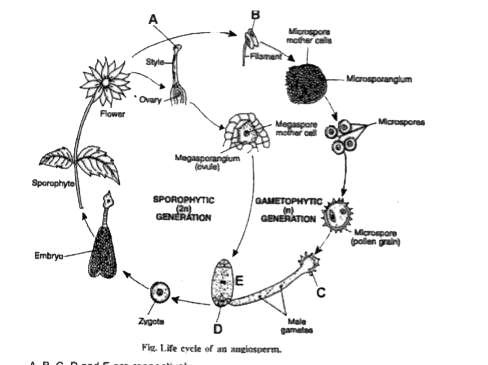
A, B, C, D and E are respectively -AStigma, Anther, Male gametophyte, Egg and Female gametophyteBStigma, Anther, Female gametophyte, Egg and Male gametophyteCStigma, Anther, Male gametophyte, Fertilized egg and Female gametophyteDStigma, Anther, Embryo sac, Egg and Female gametophyteThe given diagram shows axon terminal and synapse. Here A,B,C,D and E respectively represent
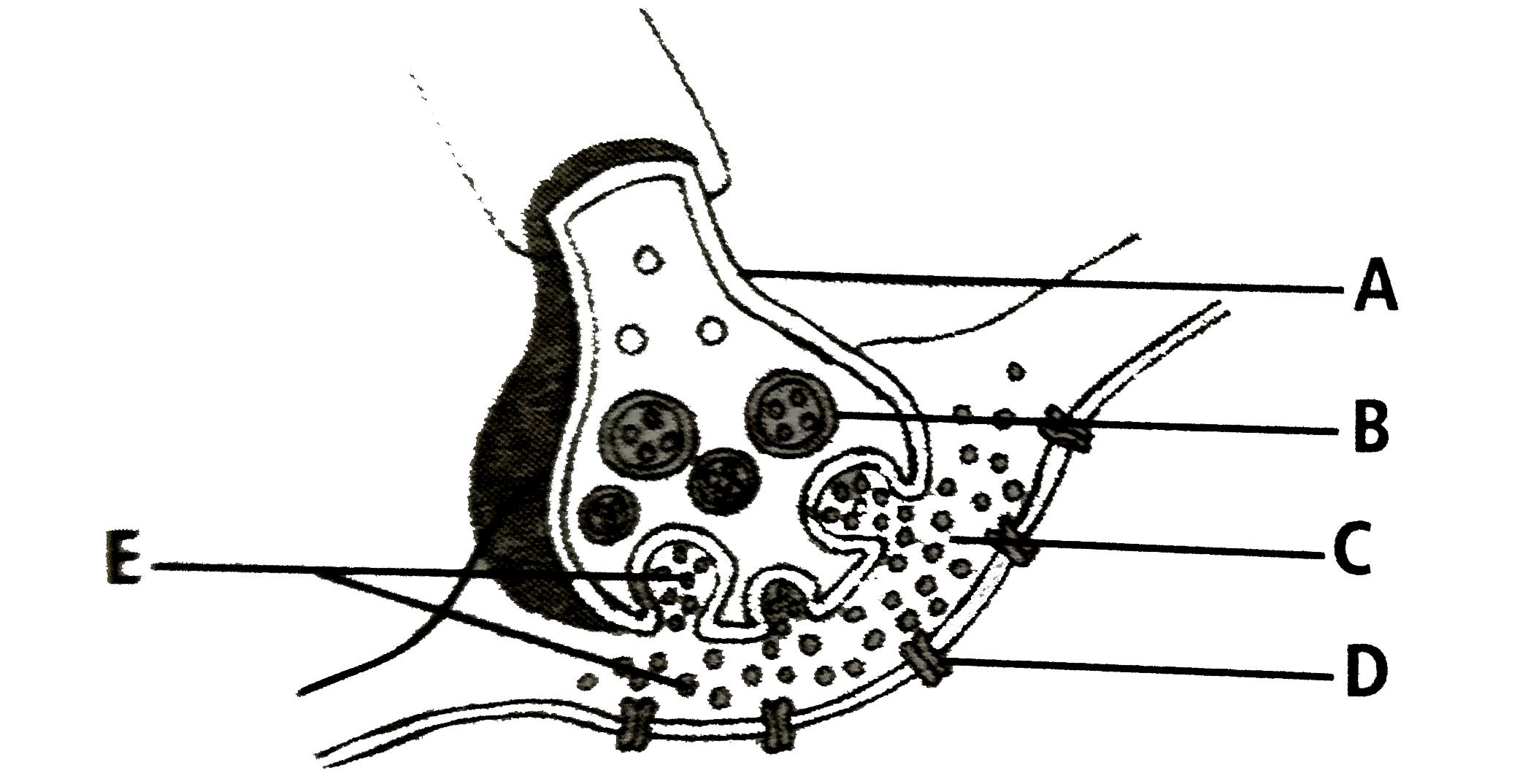 AAxon terminal, Synaptic cleft, Synaptic versicles, Neurotransmitters and ReceptorsBAxon terminal, Synaptic vesicles, Synaptic cleft, Receptors and NeurotransmittersCSynaptic cleft, Synaptic vesicles, Axon terminal, Neurotransmitters and ReceptorsDSynaptic cleft, Axon terminal, Synaptic vesicles, Neurotransmitters and Receptors
AAxon terminal, Synaptic cleft, Synaptic versicles, Neurotransmitters and ReceptorsBAxon terminal, Synaptic vesicles, Synaptic cleft, Receptors and NeurotransmittersCSynaptic cleft, Synaptic vesicles, Axon terminal, Neurotransmitters and ReceptorsDSynaptic cleft, Axon terminal, Synaptic vesicles, Neurotransmitters and ReceptorsThe given diagram shows axon terminal and synapse. Here A,B,C,D and E, respectively represent.
 AAxon terminal, synaptic cleft, synaptic vericles neurotransmitters and receptors.BAxon terminal, synaptic vesicles, synaptic cleft, receptors and neurotransmittersCSynaptic cleft, synaptic vesicles, axon terminal, neurotransmitters and receptor.DSynaptic cleft axon terminal, synaptic vesicles, neurotransmitters and receptor.
AAxon terminal, synaptic cleft, synaptic vericles neurotransmitters and receptors.BAxon terminal, synaptic vesicles, synaptic cleft, receptors and neurotransmittersCSynaptic cleft, synaptic vesicles, axon terminal, neurotransmitters and receptor.DSynaptic cleft axon terminal, synaptic vesicles, neurotransmitters and receptor.
A diagram showing axon terminal and synapse is given. Identify correctly at least two of A-C.
View SolutionIn the pelvic girdle of man A, B, C, D and E respectively represents
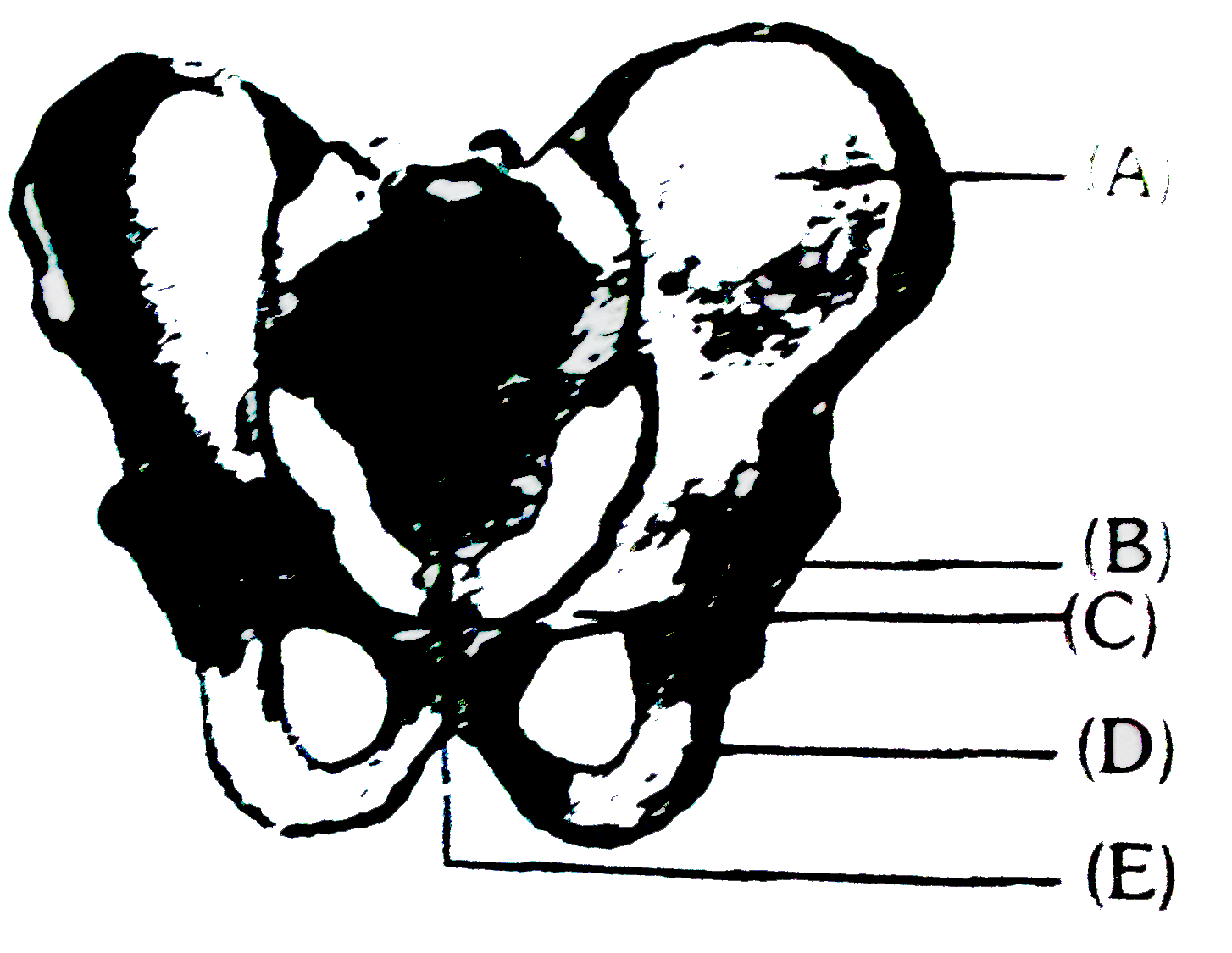
View SolutionStudy the diagram given below,

Parts labelled as A,B,C,D and E respectively represent
View SolutionA diagram showing axon terminal and synapse is given. Identify correctly at least two of A-D
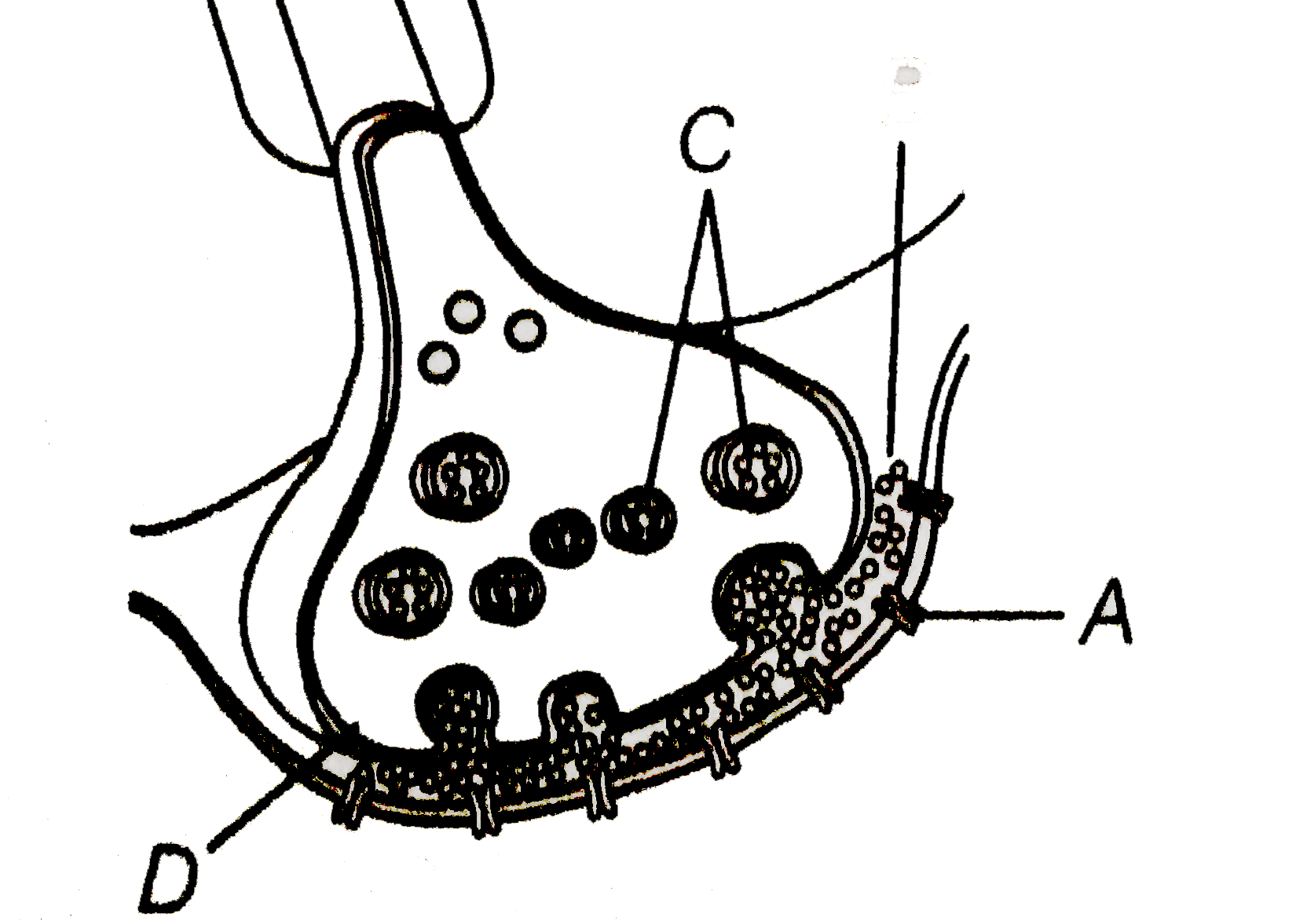
View SolutionA diagram showing axon terminal and synapse is given. Identify correctly at least two of A-D
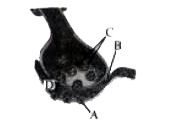
View Solution

